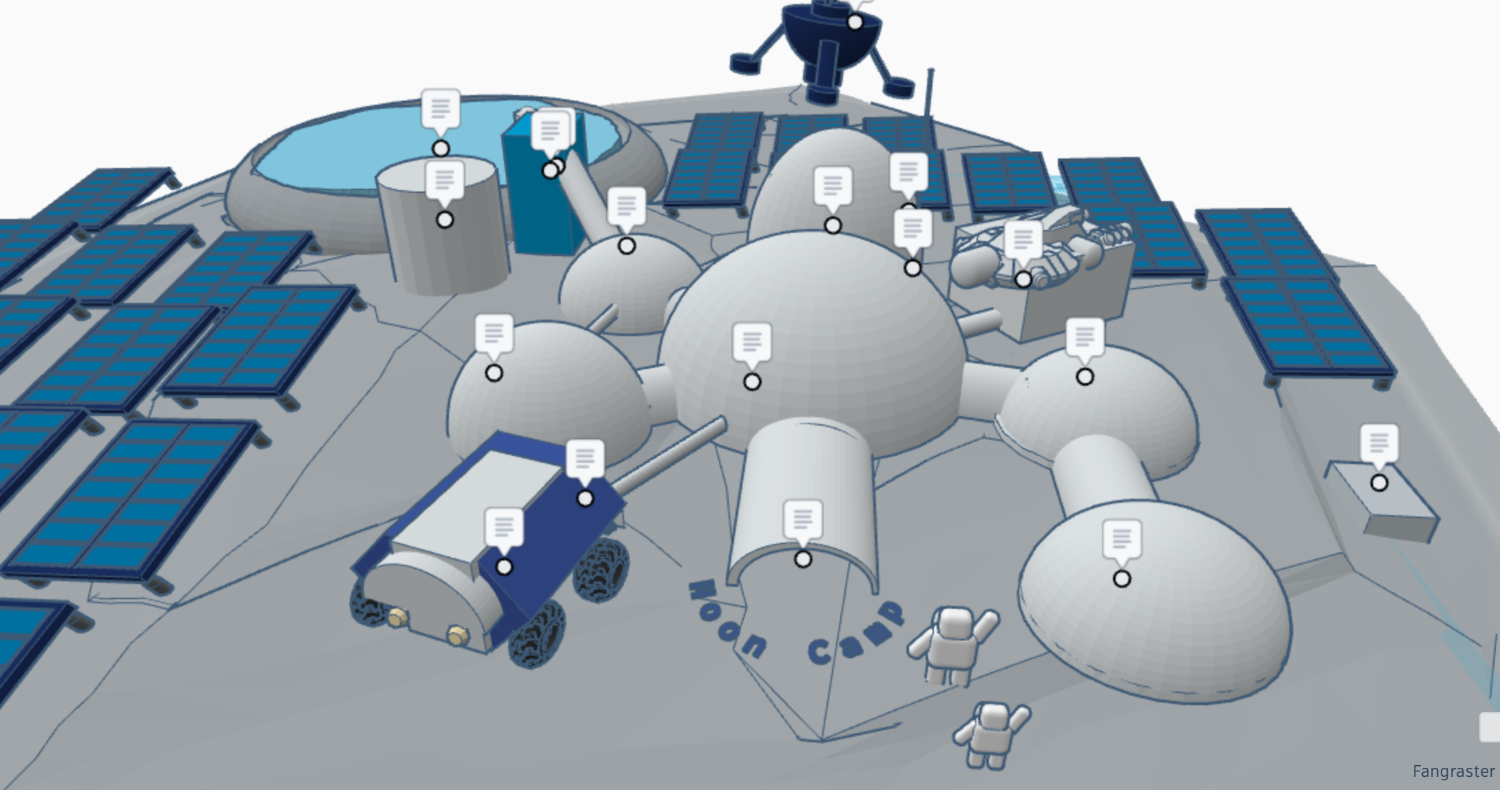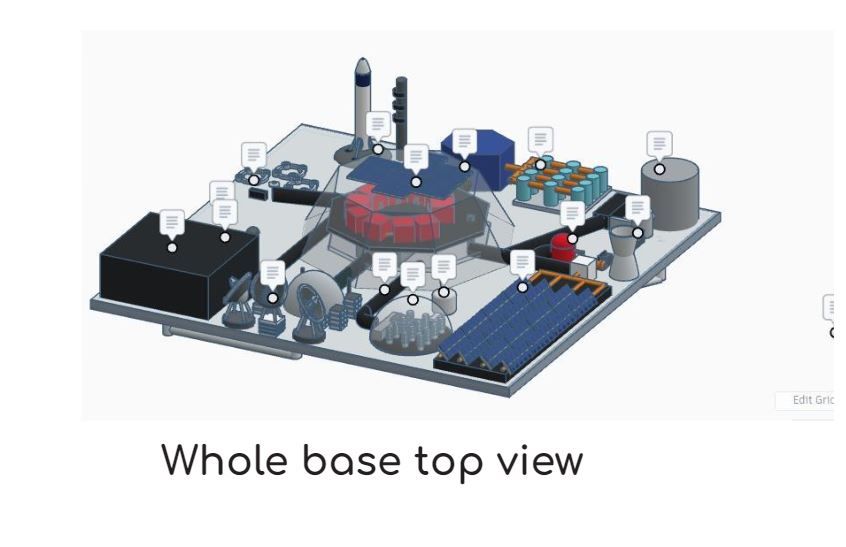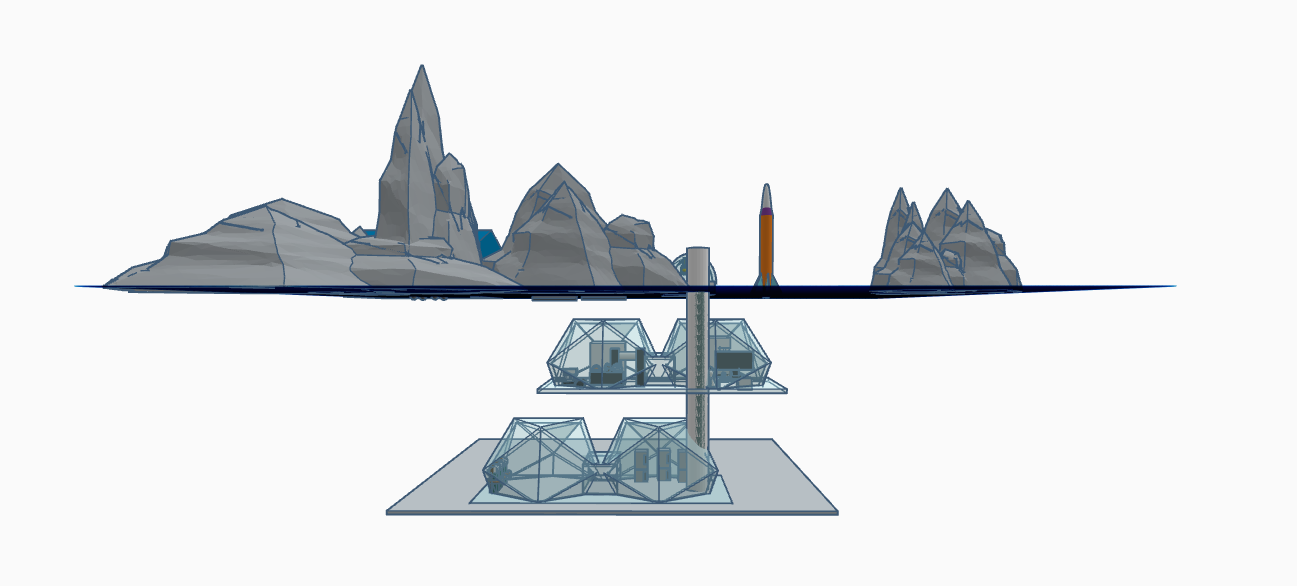Moon Camp Explorers Gallery 2021-2022
In Moon Camp Explorers each team’s mission is to 3D design a complete Moon Camp using Tinkercad. They also have to explain how they will use local resources, protect astronauts from the dangerous of space and describe the living and working facilities.
Team: CEMA
DLR_School_Lab Dresden Germany 10, 12, 14 4 / 4
External link for 3d
|
Project description
This is our Moon-Camp “CEMA”. We thought about setting it up at the South Pole, near the Shackleton crater (4 km deep, 20 km diameter). Our Moon Camp “CEMA” is provisionally designed for two astronauts. In this sense there are two private rooms and also the remaining capacities are suitable for this number of persons. However, due to the flexibility of our Moon Camp, this is constantly expandable and can thus be made habitable for more people. |
||||
|
Where do you want to build your Moon Camp?
Shackleton crater Why did you choose this location?
Stationing near Shackleton Crater would ensure a constant water supply for the camp, since the ice in the crater can be melted and used at any time. Power generation by the photovoltaic system will be assured due to sufficient sunlight during the light phase, which is particularly long at the South Pole. Also, the temperatures there are not too extreme compared to other places. Furthermore from this position a relatively good radio contact to the earth can be established, because astronomical radio waves could work at that place in usable frequencies, that´s why we have an antennta on the roof. How do you plan to build your Mooncamp? Which materials will you use?
First delivery: the larger, heavier components (oxygen-splitting-machine, rover, solar-cells, etc.) will be placed in the proper locations by machine. Second delivery: a flying-robot and the “folded” Moon-Camp comprising a metal framework covered with a thin layer of aluminum. It is dropped from the spacecraft to the surface, where it is inflated from the inside and the smaller modules bulge out from the large one (command center). The flying robot scoops moondust into itself and distributes it on the camp to make it radiation-safe. Final delivery: furnishings and the humans, who then set up the moon camp partly with machine support |
||||
|
Water
|
Food
|
Electricity
|
Air
|
Protection
|
|
The water supply of our Moon Camp will take place with the help of the Shackleton crater. We want to be able to melt and filter the ice directly at the crater and use it for the sanitary facilities of our Moon Camp, the water supply for the astronauts, as well as for the irrigation of our hydroponics system. The water can be filtered and reused over and over again. For example, the astronauts’ urine is passed through a filter system and thus recycled into drinking water |
Our Moon Camp has a hydroponics facility where the astronauts can grow some of their own food, which they eat in the kitchen. In parallel, freeze-dried dishes will be brought in and prepared in the kitchen. In addition, the astronauts are regularly supplied with food from Earth. |
Since our Moon Camp is located at the South Pole, it receives sunlight about 95% of the time. For this reason, we have placed many solar-panels around our camp to convert the sun’s energy. The photovoltaic system will be our main source of energy. |
The moon is covered by a layer of regolith, which consists mainly of oxygen (43%) in combination with iron, magnesium, calcium or silicon. When the lunar dust is heated, the oxygen is released from the compound and our astronauts can use it to breathe. We have the oxygen-splitting-machine for that, which we can use to extract the oxygen. |
On the moon, cosmic radiation is much higher than on Earth because there is almost no atmosphere and no magnetic field on the moon to deflect the radiation. The high-energy particles, which fly through space at almost the speed of light, can cause considerable damage to human cells. |
|
Describe a day on the Moon for one of your Moon Camp astronauts
From the perspective of astronaut Julia. At about 8 a.m. that day in our Moon Camp, I awoke and loosened my seat belts that kept me safely in bed overnight. |
||||







